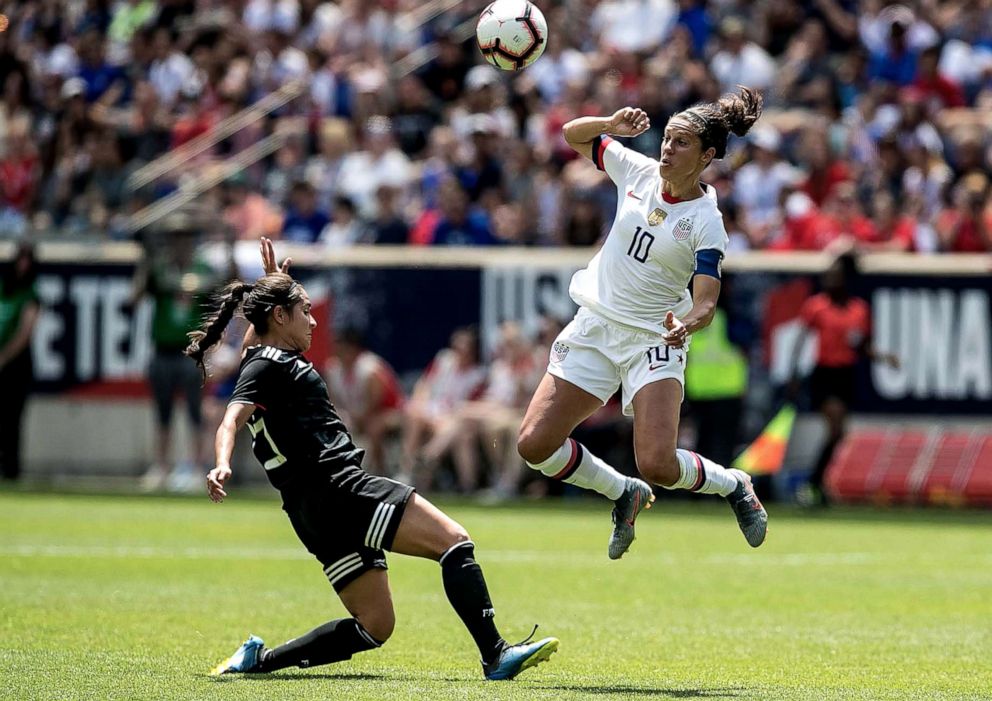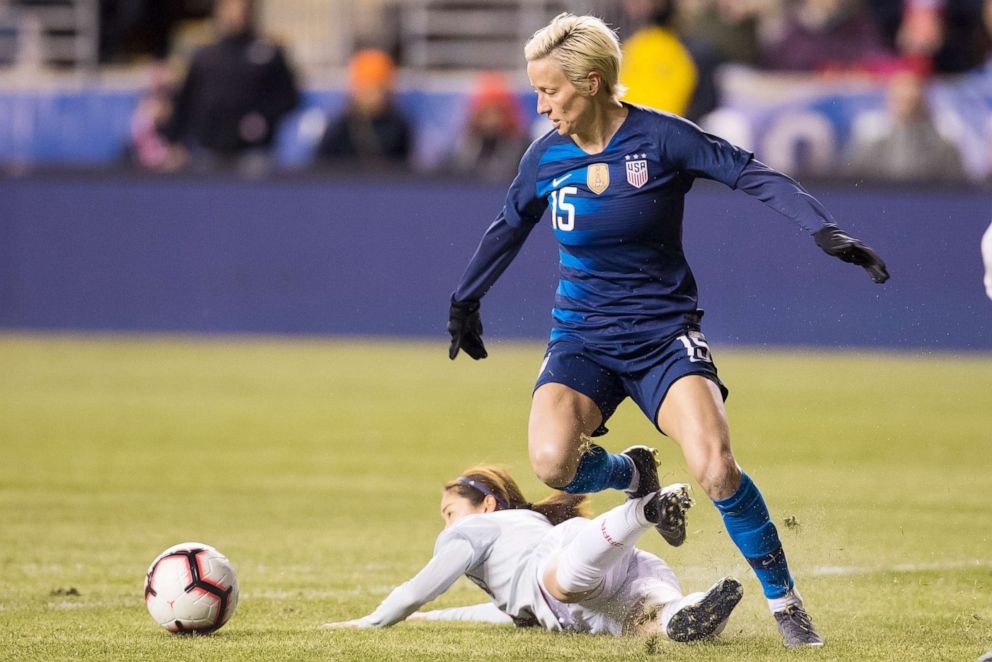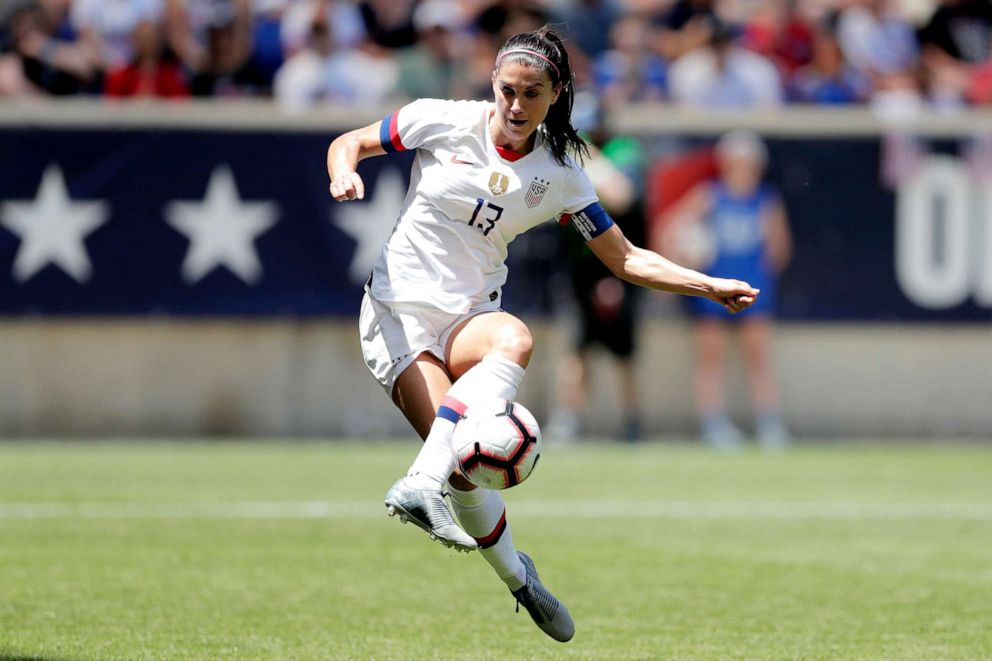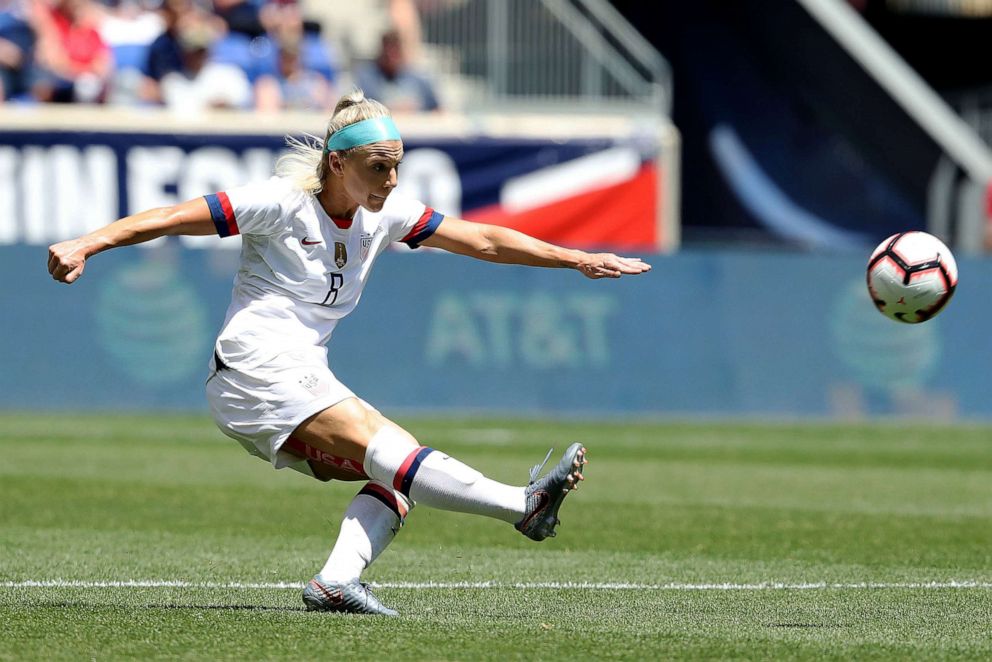2019 Women's World Cup: What to know about the US team
The U.S. arrives in France as defending World Cup champion.
This story originally appeared on espnW.com from Graham Hays, a writer/reporter at espnW.
The U.S. arrives in France as defending World Cup champion. It also enters its first major tournament since the worst showing in the history of the program. It is difficult to understand this team without understanding each of those identities. One was earned in victory four years ago in the World Cup in Canada, and the other earned in failure three years ago in the Olympics in Brazil, when the U.S. was eliminated short of the semifinals for the first time in a major event.
The result was less a restart than a reinterpretation. Rather than all new faces, it's a blend of new and old. Rather than an all new philosophy, it's a blend of the aggressiveness that worked for the U.S. in the past and the sophistication a new era in the sport demands. At least that's the plan. Not to be something different, but a better version of both 2015 and 2016.
How they got here

The philosophical journey from 2015 to 2019 was quite a lengthy trek. The physical process of qualifying, as usual in CONCACAF, was quick and easy. Hosting the CONCACAF Women's Championship for the fourth time in the past five World Cup cycles (the hosting duties shared with Canada on one of those occasions), the U.S. won group games in Cary, North Carolina, against Mexico, Panama and Trinidad and Tobago by a combined 18-0 margin.
With group opponents dismissed, the U.S. routed Jamaica 6-0 in one semifinal in Frisco, Texas, to lock up qualification. The Americans then beat Canada 2-0 on the same field in the final.
Strengths/weaknesses
The U.S. has more attacking talent than fits on the field at one time. That's a good foundation for success. The retooling that began after the World Cup, and accelerated after the Olympics, produced emerging young standouts Lindsey Horan, Rose Lavelle, Samantha Mewis and Mallory Pugh. It also produced revitalized versions of Tobin Heath, Alex Morgan and Megan Rapinoe, not to mention a new role for Carli Lloyd seeking goals as a No. 9. When the U.S. gets going full throttle, as it did against quality opposition during last year's Tournament of Nations, the pressing and marauding is irresistible to watch and nearly impossible to stop.
While goal production and finishing has nonetheless been an issue at times, most notably in producing just one goal in the four most recent games in Europe, it's the other end of the field that generates the questions. The presumptive starting outside backs are Crystal Dunn, a more natural midfielder or forward, and Kelley O'Hara, who has missed significant time with injuries over the past year. Depth beyond them is uncertain. And as you might have heard, the U.S. will play in a World Cup without at least one of Briana Scurry or Hope Solo for the first time since 1991. That leaves Alyssa Naeher in the unenviable task of living up to legends.
Money stat: 11 of 29

The presumptive first-choice forward line of Heath, Morgan and Rapinoe has started together in just 11 of 29 games since the beginning of 2018. Some of that is normal rest and rotation. Some of that is because Pugh and Christen Press could start for any other team in the world and need minutes of their own. But it's also an example of a lack of continuity that has bedeviled this team. Julie Ertz, Horan and Lavelle started together as a midfield in just nine of those 29 games. (Ertz, Lavelle and Mewis, the next-most-likely World Cup combination, started together once.) Abby Dahlkemper, Dunn, O'Hara and Becky Sauerbrunn started as a back line in seven of 29 games.
Players to watch
Julie Ertz: It wasn't solely cause and effect, and she would be the first to suggest she isn't without her own imperfections, but something changed for the better in this team's development at the same time that Ertz shifted from defender to holding midfielder during the Tournament of Nations in 2017. She is fearless in her tackles and challenges, often to her own physical detriment, and her energy radiates around the field. And if she's not the silky-smooth passer that coach Jill Ellis might envision for the role, she grows better by the year on the finesse side.

Alex Morgan: The 2015 World Cup was fulfilling for her as a collective achievement but clearly a personal struggle to get back to 100% after injuries. The 2016 Olympics were by her own admission a disappointment. So what was next for Morgan as she neared 30? A renaissance, as it turns out. Morgan cruised to 100 career international goals, playing the best soccer of her life over the past 18 months. She's a well-rounded No. 9 and the perfect fit for a pressing style.
Megan Rapinoe: It's much the same story as Morgan. There was very real reason to wonder if Rapinoe was part of the long-term plans after she was unable to fully recover from a knee injury in time to play a major role in the Olympics (the injury sustained on substandard turf in Hawaii while on duty with the national team). Now she's the player most likely to create a goal, working brilliantly with Dunn behind her and Morgan next to her. Now one of the team's captains, she also comes across as one of those most likely to say what needs to be said within the camp.
Key game

As if it could be anything but the reunion with Sweden. Most recently, of course, Sweden is the team that sent the U.S. packing after a penalty shootout in an Olympic quarterfinal in 2016, the game in which Sweden's defensive approach under then-coach Pia Sundhage infuriated Hope Solo and effectively ended Solo's time with the team because of her resulting comments.
But Sweden always figures into the plot somehow. The teams played to a 0-0 draw in the group stage of the 2015 World Cup. Sweden beat the U.S. for first place in the group in 2011 — which is why the U.S. was even playing Brazil in the quarterfinal in which Abby Wambach scored two minutes into stoppage time of extra time. This is the fifth consecutive World Cup in which they share a group and the sixth overall. And with any point Chile or Thailand take off either the U.S. or Sweden a major surprise, the latest installment in the rivalry should settle Group F.
Local feedback
"I don't feel like we're defending that [2015] title, but I think we defend everything all the time. I think we're seen as one of the most consistent teams -- and sort of historically one of the best teams in the world. So I feel like we're always wanting to keep that place in the world. But it feels like, honestly, a totally different team. Obviously the ones that were there, we sort of know that we have that. But you don't get any extra points for defending anything in the past. You need to go win another one."
— Megan Rapinoe
"I think she's incredibly talented. She has a great athletic ability, and she's very good with her feet. The only question I would have is how is she going to perform when it's really stressful? We don't know that, right? We've seen her in league play, and we've seen her in SheBelieves Cup and other tournaments, but subconsciously you know that you're not in a World Cup and you know you're not in an Olympic Games. No matter how you try to make the game be as game-like as you can, that's the one element that's question mark. But other than that, she's got all the tools." --
— former U.S. goalkeeper Briana Scurry on Alyssa Naeher
Prediction
The U.S. has the talent and chemistry to win the World Cup. But so much of any tournament involves the particular circumstances on the ground. And looming out there this time is the possibility of a quarterfinal in Paris between the U.S. and France, arguably the two deepest and best teams in the event (that will be the pairing if each team wins its group and its first knockout game). The French have had all the answers in that series of late.




